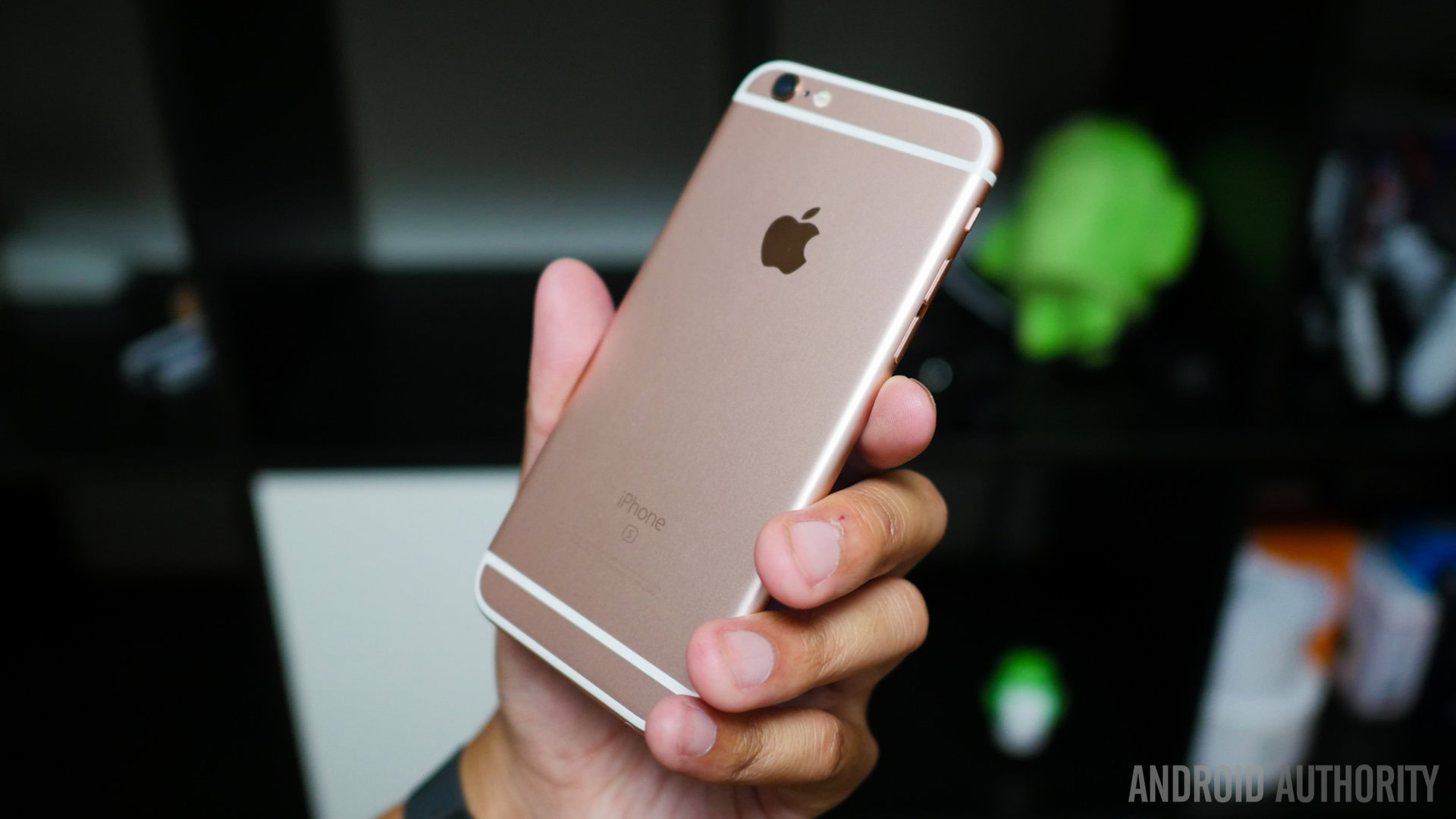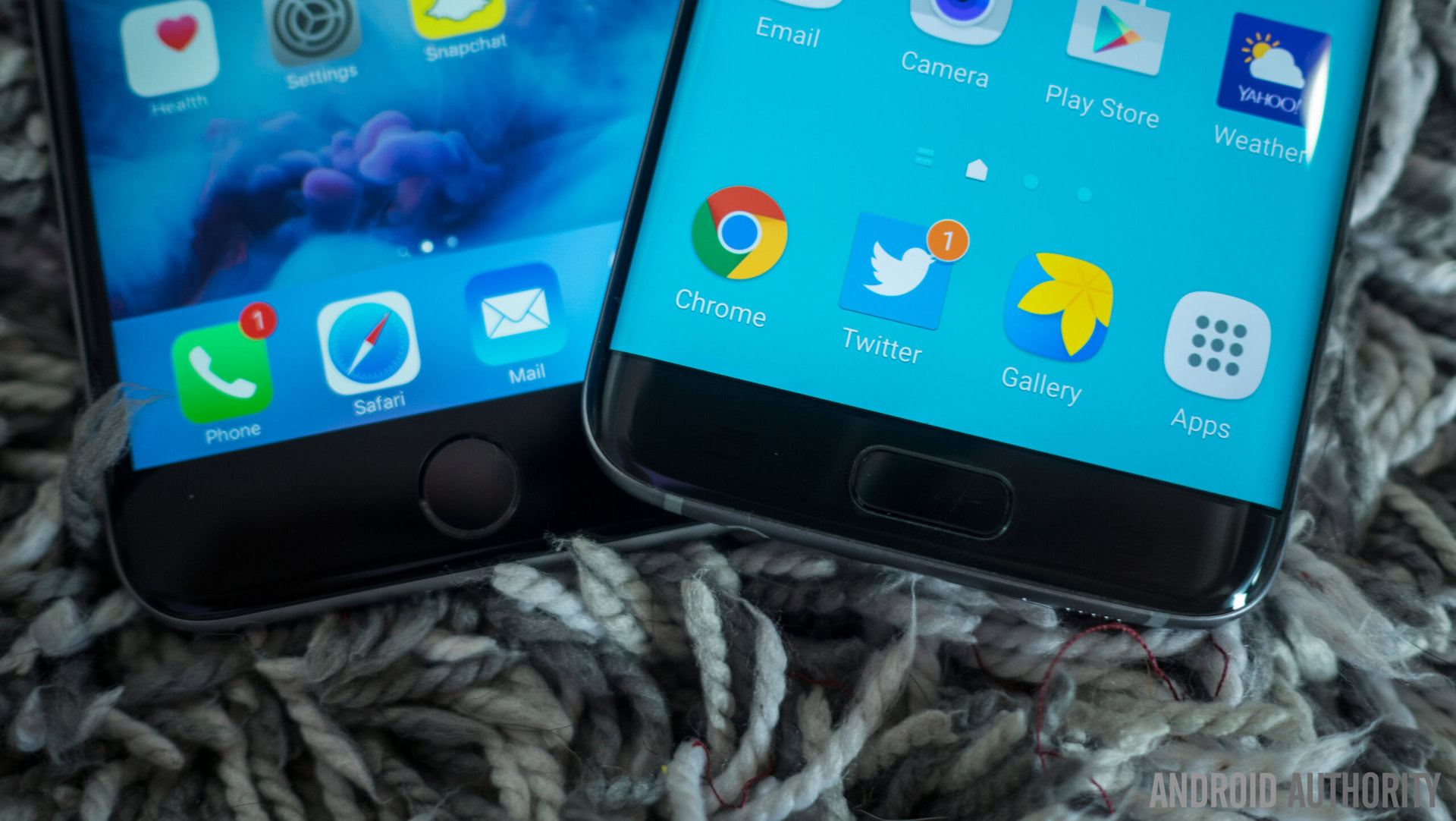Affiliate links on Android Authority may earn us a commission. Learn more.
Why Apple's potential AMOLED usage is good...and bad
Published onMay 28, 2016

By now it’s becoming a well known assumption that next year’s iPhones will have AMOLED displays, as report after report serves up new evidence of this theory. The story itself is quite simple: Apple is allegedly going to purchase panels from Samsung, to the tune of 100 million. Depending on the rumor however, things become more myriad as other OLED manufacturers are also included in the mix, with the Galaxy maker’s quota still being cited as the primary supplier.
This piece will go into the overall situation and try to ascertain if AMOLED assembly can reinforce Apple’s profit picture and eventually stem the decreasing tide of sluggish sales, which have taken place over the first quarter this year and threaten to dampen future finances as well. In addition, consideration will also be paid to the situation Samsung will be facing as well and whether the move to AMOLED is good or bad for both parties.
A boost for iPhone sales?
[related_videos title=”Android vs iPhone:” align=”right” type=”custom” videos=”686286,684690,683535,670067,657282,654055″]The first question to ponder is just what kind of result the introduction of AMOLED displays will have on iPhone sales. Given that Q1 2015 has been tough for the Cupertino company, it’s quite possible that the golden hay day of Apple’s halo product has entered a mature stage of the market. The iPhone is, in a very real sense, “perfect” as it is today in terms of tangible user needs and functionality. Sure the design can be changed and the cameras can be improved for example, but the company has a major problem now in trying to get even its more hardcore users to keep upgrading to new models when existing ones already occupy a staid sweet spot.
In truth this is a similar situation faced by Android OEMs as well, given that the flagships of today are not so different from those released last year. Sure the specs are slightly better, but it is no stretch to say that Samsung’s Galaxy S7 is more of a Galaxy S6S than it is a truly unique and original new phone. It’s not a bad thing per se, but just goes to show how difficult – or perhaps cost-intensive – it is for companies to keep making new brand new looking products when the insides themselves aren’t changing so often. Cars and computers typically use the same designs and whatnot for several years, so why not smartphones, too?
So, could the introduction of an AMOLED screen solve this somber situation? It’s difficult to say. While Apple could boast about the infinite contrast level and almost hyper-realistic color saturation, would that be a major deciding factor to purchase the phone? It may work in Android land when a customer is torn between two similar products and one has OLED, but Apple is just…Apple. Buying an iPhone would mean getting an AMOLED display and that’s that. It would assume that (1) existing owners are not satisfied with the current iPhone LCD displays, and (2) that customers would be willing to upgrade just to get an AMOLED – assuming that there are no other major hardware developments with 2017’s version.
A puzzling paradox
Still, given the propensity of some Apple users to proclaim how they are more refined or sophisticated than Android users, as well as the idea that Apple products are for serious professionals, one might actually see how fans could openly “revolt” against the idea of the products suddenly offering color saturation and reproduction that is not “accurate”. Consider how Apple went as far as to introduce a tinting display adjustment feature for the iPad Pro 9.7 when it launched earlier this year to easy night usage, and it becomes all the more odd to think this company could be touting “absurd” vibrant, vivid colors come 2017. If anything, AMOLED amps things up, not tones them down.
Beyond that, what kind of advantage could the company even tout over the competition when Samsung’s been using the technology for years? Apple can make a stink about anything it thinks will have its fans tickled pink, but consider that OLED displays are now quite commonplace in the smartphone market. Considering how many tens of millions of Galaxy products Samsung sells each year, not to mention the long term history of the Galaxy series with AMOLED, and chances are OS agnostic people are aware that Samsung phones have “better” screens even if they don’t know why or how.
Samsung sales situation
It is also pertinent to consider what will happen on the opposite side of the fence: Samsung has built its Galactic empire not on the shoulders of a certain Senator, but in no small part thanks to its…parts. The Super AMOLED displays used on flagship Galaxy smartphones – and now mid-rangers as well – have always been a major draw and point of comparison among shoppers. If Apple suddenly starts having the displays, then Galaxy phones suddenly aren’t nearly as special as they once were. This issue has already been addressed with respect to Android OEMs buying AMOLED displays as well, thus making even Google’s platform less special for Samsung.
Of course the real deal here is that Samsung – the corporation – doesn’t really care if Apple uses AMOLED, because doing so means it gets mucho money. Given the absurd number of iPhones that Apple sells, if Samsung were to get even 10% of the production volume quota it would likely be a huge win. But to consider it might get 40% or 70% or possibly even more…it’s like a path to pure, glittering gold. While the OEM currently has to accept that Android rivals have avoided buying its AMOLED displays due to high costs, a consistent contract with Apple means sublime stability.
One caveat however: nothing lasts forever. There are already a few rivals who can make an OLED display, and if Apple suddenly has a real need for hundreds of millions of them, chances are that the interest in getting into the business will become all the more appealing. In fact, the overall situation is posed to expand in a major way according to a new post by The Korea Times which states, among other details that:
The global shipments of OLED display panels are expected to soar to 630 million units in 2019 from 250 million in 2015, according to a report by industry tracker IHS. The shipments of LCDs, in the meantime, are forecast to inch up from 1.29 billion to 1.34 billion in the same period.
Suffice to say, Samsung will no doubt be the major winner as AMOLED becomes more popular, and with Apple in partnership, it can expect some good tidings when it comes to earnings reports.
Wrap Up

It’s almost ironic to think that there are so many reports about the next iPhone and its AMOLED display component while there is a very real new pair of iPhones that will be releasing in just a few months. In fact, some rumors have even suggested that 2016’s offerings will offer very little in terms of a redesign or upgrade, with next year being the “big one”.
What do you think, though? Would Apple’s use of an AMOLED display – perhaps even a curved one like on the Galaxy S Edge phones – make the device more appealing? Do you think it would actually make contend iPhone users upgrade? Would it cast a shadow over Samsung’s Galaxy S phones? Leave your thoughts below!